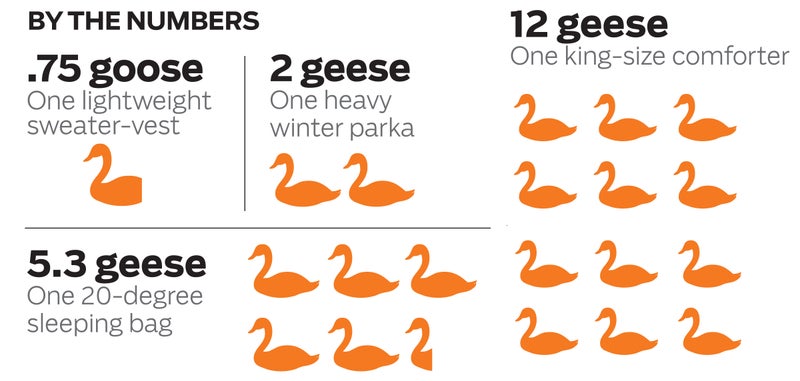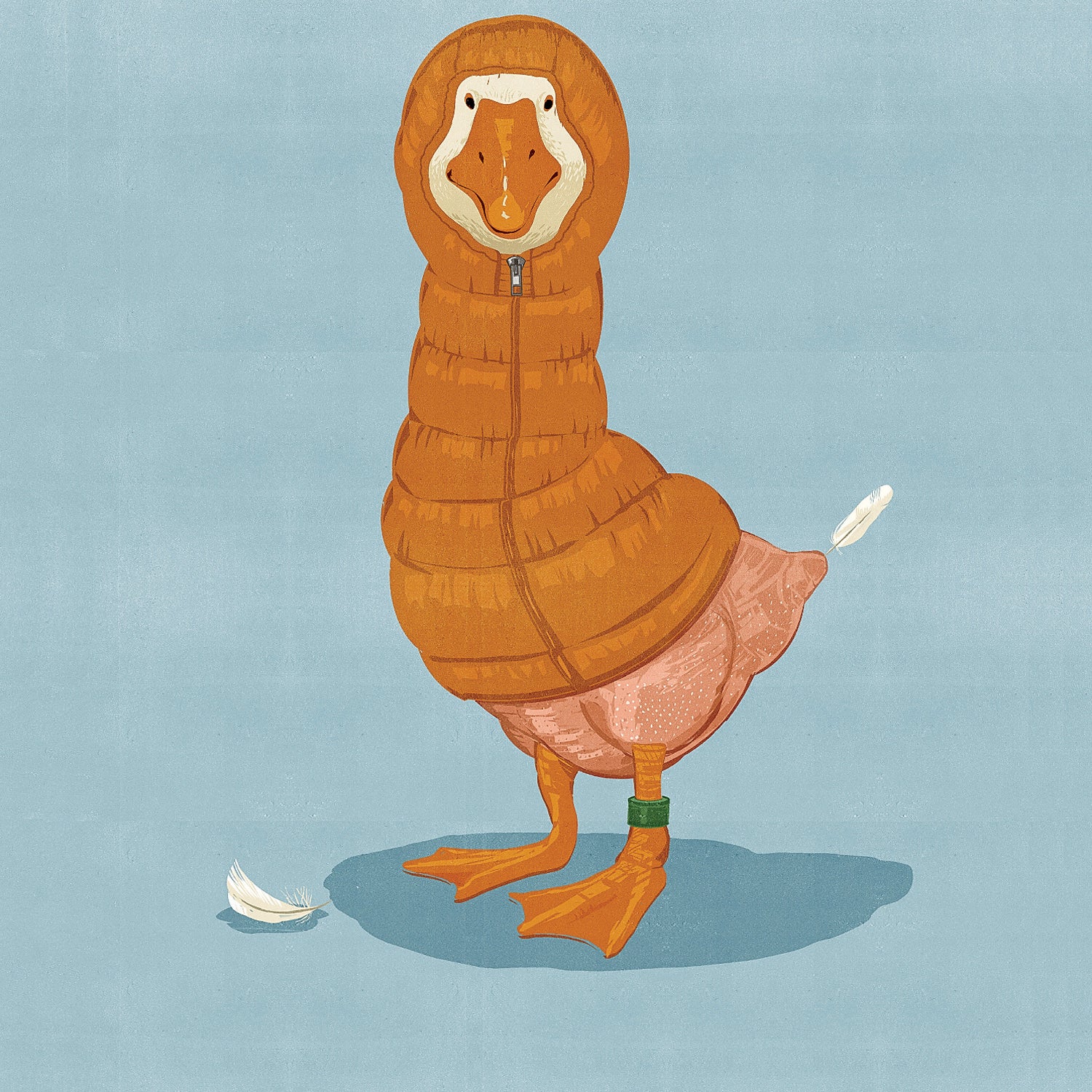As warm and happy as your favorite down puffy makes you feel, it probably comes with a brutal backstory. The feathers, sourced mainly from the soft undercoats of geese, may have been “live plucked”—a bloody process that critics say leaves the birds traumatized after they’re released to lay more eggs. To make matters worse, those same geese are often being raised for foie gras, which means they’re force-fed several times a day through a pipe that’s rammed down their throats. In short: some down is dirty.
Cleaning it up isn’t easy. The global down industry includes everything from Chinese factory operations to subsistence farms in Hungary, some of which raise the animals for meat and live-pluck them to boost profits. Those farmers then sell the feathers (mostly from geese, but some from ducks) to a handful of suppliers, who in turn mix it all together and sell it to outdoor companies.
Now some of those companies are trying to change the way the industry works. Bowing to pressure from animal-rights organizations like Austria-based , a few are introducing new standards to ensure that the down they stuff into their jackets and sleeping bags comes from humanely treated geese. “Animal-rights groups went after the outdoor industry first because they knew it was the most likely to change,” says Anne Gillespie, director of industry integrity for , which develops standards and certifications.

Patagonia is leading the way with its Traceable Down Standard, introduced in 2014. “We started looking for a certification we could follow but didn’t find one strong enough to meet the requirements we’d hoped to achieve,” says Wendy Savage, who manages Patagonia’s supply chains to make sure they’re socially responsible. Since then, other outdoor companies have worked to develop their own standards.
Two of those companies, Patagonia and Fjällräven, were able to go directly to a small set of producers to make sure that 100 percent of their down comes from geese that get adequate food and water, have lots of space to feed and to lay eggs, aren’t force-fed, and are plucked only after they’re slaughtered. For brands like the North Face, which manufactures on a much larger scale, the process is more complex. While its (RDS), introduced last August, contains similar requirements, only 30 percent of the North Face’s products will contain clean down in 2015. That’s because there isn’t enough of it to meet demand. That should change by 2017, when the company says it will reach 100 percent clean down.
In the meantime, it’s trying to get other gearmakers to sign on to RDS. The standard is designed to work like organic certification, with labels that indicate which products comply. Eddie Bauer and Marmot are already on board. “The hope is that this will lead to widespread adoption of better practices,” says Adam Mott, director of sustainability at the North Face. “Not just in outdoor gear, but in all consumer products.”
In the print version of this story, we implied that all waterfowl raised for meat are live-plucked, and that most down used in the outdoor industry comes from live-plucked geese. In fact, only some geese raised for meat are live-plucked, and much of the industry discourages the practice. The online version of the story has been edited to reflect these clarifications.


